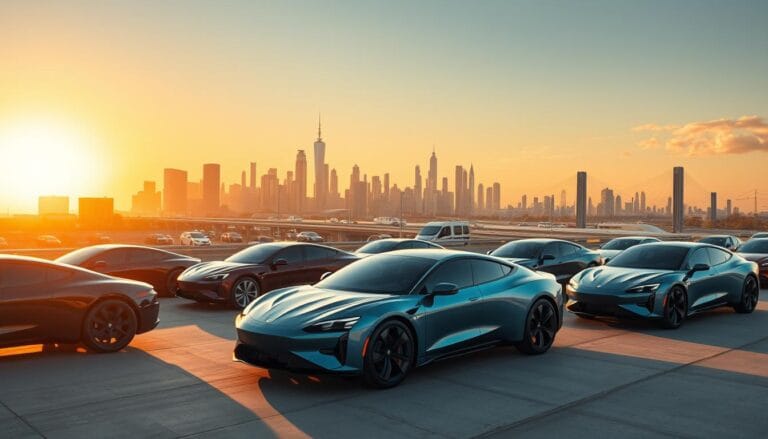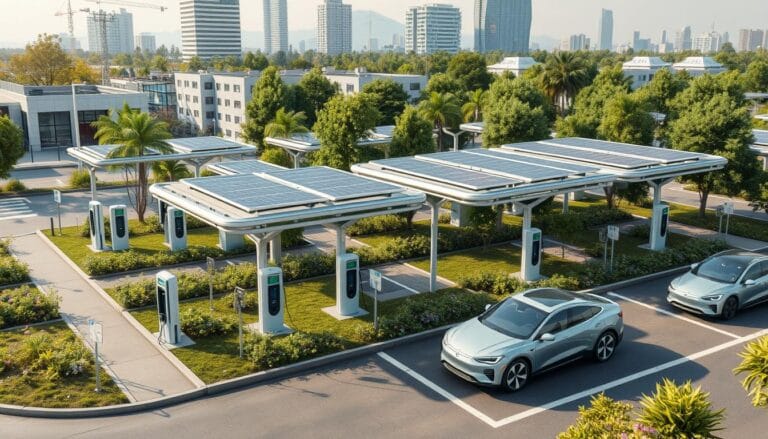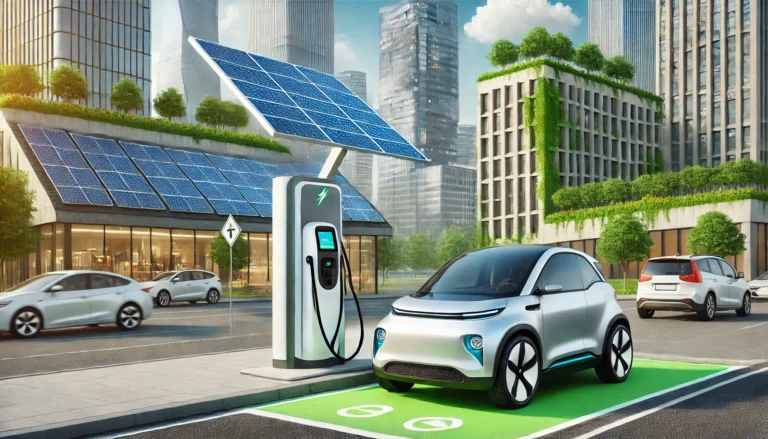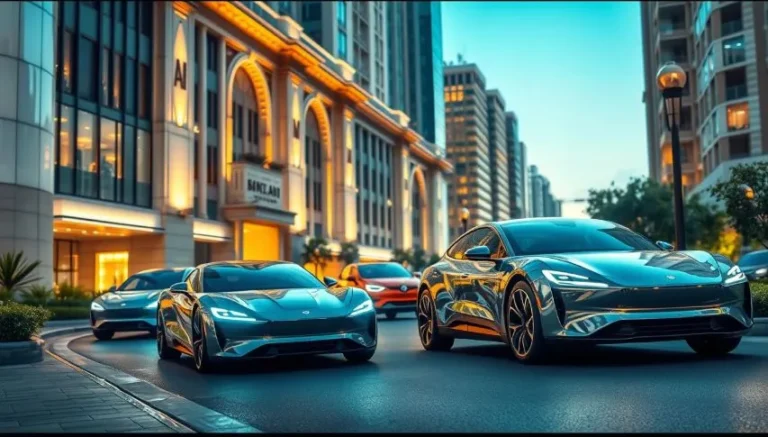EV Policy Updates: What New Regulations Mean for Drivers in 2025
Imagine driving your electric vehicle on the highway. You’re not just moving; you’re part of a big change towards sustainable transport. The world of electric vehicles is changing fast, and 2025 will bring big EV policy updates.
The Inflation Reduction Act is making a big change in EV policies. Now, there are bigger tax credits for new, used, and commercial electric vehicles. This makes electric cars more appealing than ever.
These policy updates in 2025 are more than just paperwork. They’re about making our transport cleaner and more efficient. Changes in charging infrastructure and emissions standards will affect your driving and your wallet.
By 2025, electric vehicles could make up to 25% of new car sales. This is a key moment in car history. The $7,500 federal tax credit is available, making it a great time to look into electric cars.
Table of Contents
Understanding EV Policies and Their Importance
Electric vehicle policies are changing how we think about driving. Environmental rules are pushing for big changes. Knowing these policies is key for every driver.
The shift to electric cars is huge. By 2032, 67% of new cars in the U.S. will be electric. This shows a big change is coming.
Why EV Policies Matter for You
EV policies affect your driving and money choices. They touch on:
- Potential tax credits and financial incentives
- Charging infrastructure development
- Vehicle pricing and affordability
- Environmental sustainability goals
Key Terms to Know
Understanding electric vehicle policies can be tough. Here are key terms to keep you in the loop:
- Zero-Emission Vehicle (ZEV): A vehicle that produces no tailpipe emissions
- Environmental Regulations: Government rules to cut vehicle emissions
- EV Incentives: Financial perks like tax credits or rebates for electric cars
The Inflation Reduction Act supports EVs, and 65% of Americans agree. Knowing these policies is vital. Stay updated to make smart choices for your driving needs.
How New Regulations are Shaping the EV Market
The car industry is changing fast because of new rules on emissions. These rules are making big changes in how cars are made, priced, and sold.
New policies are making big changes in electric cars. The Biden administration wanted 50% of new cars to be electric by 2030. But now, these goals might change.
Changes in Vehicle Emission Standards
Key changes include:
- Proposed 25% import tariff on vehicles from Mexico and Canada
- Potential reduction in federal EV adoption support
- Stricter tailpipe emissions standards
Impact on Vehicle Pricing
New rules are making cars more expensive. A big tariff on battery materials could make batteries 29% more expensive. This could raise the price of cathodes by about US$10,000 per ton.
| Regulatory Factor | Potential Market Impact |
|---|---|
| Battery Material Tariffs | 29% price increase in battery cells |
| Tax Credit Removal | Potential significant reduction in EV adoption |
| ZEV Mandate Changes | 30% of US light vehicle market potentially affected |
The Zero Emission Transportation Association says EVs are key for America’s economy and global standing. Both makers and buyers need to keep up with these changing rules.
Accessing Charging Stations: The Latest Updates
The world of electric vehicle charging is changing fast in 2025. New updates will make driving electric cars easier and more convenient. The U.S. is seeing big improvements in charging stations, making life easier for EV drivers.
Clean energy is getting a big boost thanks to new investments and partnerships. Some big news includes:
- Honda and Acura will access over 20,000 Tesla Superchargers in North America starting June 2025
- Ford has distributed NACS adapters to 140,000 customers
- The federal government has allocated $7.5 billion to support charging network development
Tesla Supercharger Access Rollout in June 2025
Tesla is making charging easier for more car makers. They plan to put Supercharger sites at Steak ‘n Shake locations. They aim to add 100 restaurants across the country.
Expanded Charging Networks Across the U.S.
Charging stations are growing fast. General Motors and ChargePoint will add up to 500 DC fast-charging ports by 2025. The U.S. Department of Energy is giving EVgo $1.25 billion to add about 7,500 chargers at 1,100 stations.
The future of EV charging is here, and it’s more accessible than ever before.
State-Level EV Incentives You Should Know About
Electric vehicle buyers are finding a wealth of state-specific incentives. These can greatly lower the cost of electric cars. Government subsidies for EVs are growing, thanks to renewable energy policies.
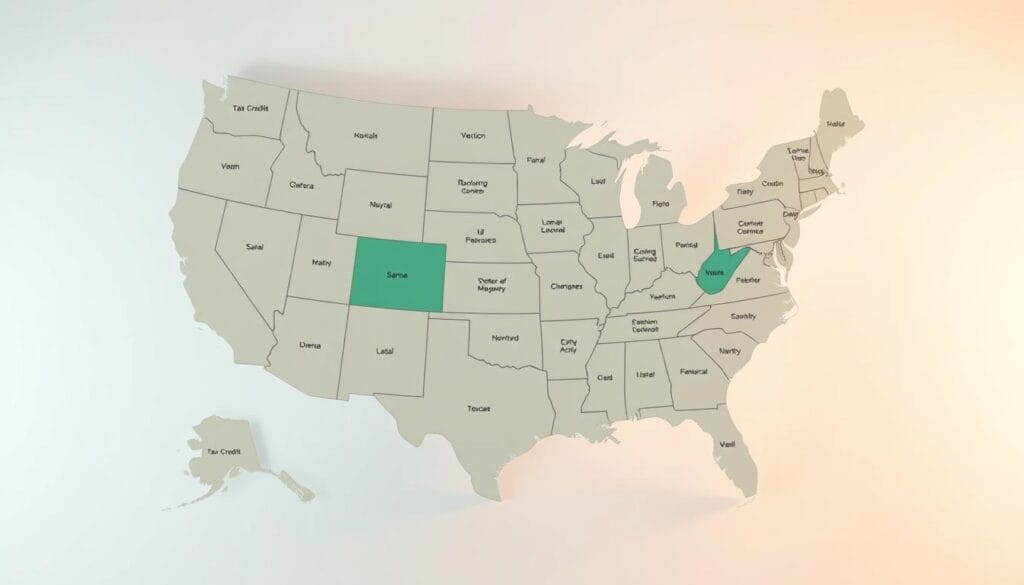
EV incentives vary a lot from state to state. Some areas offer big financial help. This makes owning an electric car more affordable than ever.
California’s Groundbreaking Rebate Programs
California is at the top when it comes to EV incentives. The benefits are quite impressive:
- Up to $7,500 rebate for battery electric vehicles (BEVs)
- Clean Vehicle Rebate Project offers a lot of financial support
- Additional $2,500 for low-income residents
“California’s commitment to electric vehicles is transforming the automotive landscape” – Clean Transportation Expert
Tax Credits Across Different States
While California stands out, other states are also boosting EV incentives:
- Vermont offers up to $4,000 for new EV purchases
- Connecticut gives rebates from $750 to $9,500
- Oregon supports EV buyers with rebates up to $7,500
- New Jersey exempts EVs from state sales tax
Your state might have special incentives for electric vehicles. Always check local utility companies and state programs for the latest offers.
Federal Initiatives Supporting EV Adoption
The United States government is working hard to make electric vehicles more common. They are updating EV policies to make owning an electric car easier for Americans.
The Electric Vehicle Working Group (EVWG) was set up in December 2023. It has been key in planning how to add electric cars to our roads. Their report in April 2024 gives important advice on how to increase EV use.
New Federal Grants Overview
Now, the government is giving out grants to help with EVs and their charging stations. They are focusing on several key areas:
- Helping EV makers with money
- Offering discounts for buying electric cars
- Supporting research on better batteries
Infrastructure Expansion Plans
The government is putting a lot of money into making more charging stations. They plan to:
- Grow the number of public charging spots
- Build fast-charging networks for big trucks and buses
- Work with local governments to improve the power grid
| EV Charging Infrastructure Metrics | Current Status |
|---|---|
| Publicly Available Charging Ports | 203,000 |
| New Ports Activated Weekly | Nearly 1,000 |
| Federal Charging Projects | 24,800 |
The Biden administration wants electric cars to make up 50% of new car sales by 2030. These efforts are key to making that happen. They show the government’s serious commitment to cleaner transportation and less pollution from cars.
The Role of Major Players in the EV Industry
The electric vehicle (EV) market is changing fast. As we move towards clean energy, big names are stepping up to lead the way.
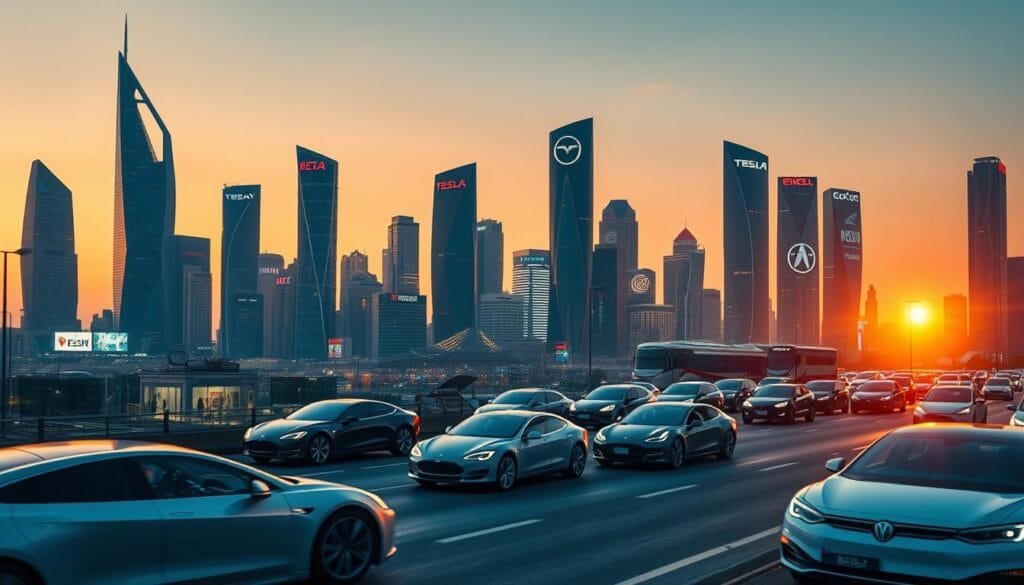
Tesla is a big name in EVs, even with some recent bumps. In 2023, it sold over 45% of electric cars in the US. This is down from 60% in 2020.
Tesla’s Technological Leadership
Tesla keeps pushing the EV scene forward. Its tech has set the bar for:
- Battery performance
- Charging infrastructure
- Autonomous driving
“Innovation distinguishes between a leader and a follower.” – Elon Musk
KGM’s Musso EV: A New Market Entrant
New players are making waves in the EV world. KGM’s Musso EV is one to watch in the growing electric car market.
| Manufacturer | Market Share | Key Innovation |
|---|---|---|
| Tesla | 45% | Advanced Charging Technology |
| BYD | 20% | Competitive Pricing |
| KGM | Emerging | New EV Model Launch |
When you’re looking to buy an EV, knowing the market is key. With electric cars making up over 20% of new car sales in 2024, keeping up with the industry is important.
Consumer Protection in the New EV Era
The electric vehicle market is growing fast. This means consumer protection is now a big deal. With almost six million electric cars on U.S. roads, knowing your rights and safety is key.
New EV policies are changing how we buy and own electric cars. These updates aim to make things clearer and safer for car owners.
Warranty Changes and Consumer Rights
New rules are making things better for car buyers. The main changes are:
- Longer battery warranties
- Clearer info on how cars perform
- More honest pricing and cost info
Now, car owners get more protection. Car makers must give:
- More detailed maintenance info
- Better battery guarantees
- Clear warranty terms
Safety Standards and Regulation Updates
Safety is always first in the EV world. New rules are making electric cars safer. They focus on:
- Better battery safety
- Secure charging systems
- More thorough crash tests
Protecting consumers is not just about rules—it’s about ensuring confidence in the electric vehicle revolution.
With 94 percent of EV owners likely to buy another, these rules are building trust. They’re helping the electric car world grow stronger.
The Future of EV Travel: Trends to Watch
The world of green travel is changing fast. New tech is changing the car industry. Electric cars are becoming more popular, bringing new ideas to how we move around.
New breakthroughs are making electric cars better. They will soon be easier to use and fit into our daily lives. Here are some big changes coming to driving:
- Advanced battery technologies extending vehicle range beyond 300 miles
- Intelligent charging infrastructure with bidirectional charging capabilities
- Integration of smart grid technologies
- Enhanced autonomous driving features
Emerging Technologies Transforming Transportation
Autonomous cars are key to green travel. By 2030, over 26.4 million EVs will hit U.S. roads. They will drive better and safer, thanks to new rules.
The Role of Autonomous Vehicles
Companies like Amazon are leading with new ideas. Zoox robotaxis in San Francisco are just the start. People are getting more confident in self-driving cars, changing how we see travel.
The future of transportation is not just about electric vehicles, but about creating intelligent, connected mobility ecosystems.
Exploring these new trends is important. It helps you choose the best way to travel in the future.
How These Changes Affect Your EV Experience
The world of electric vehicles is changing fast. Electric vehicle incentives and better charging spots are changing how we travel. With more people choosing electric cars, it’s important to know what’s happening.
Keeping up with new rules is important. The U.S. Department of Energy and Energy.gov have great resources. You can use the Alternative Fuels Data Center to find charging spots near you. This helps you save money and stay updated on new EV tech.
Joining EV groups and signing up for newsletters is a good idea. The Biden Administration is investing big in electric cars. By 2035, electric cars might be 71% of all car sales. So, it’s smart to stay informed about new trends and tech.
Planning ahead is essential for using electric cars. Look into local deals, know where to charge, and keep up with car maker news. As more people buy electric cars and more charging spots open up, your experience will get better.



